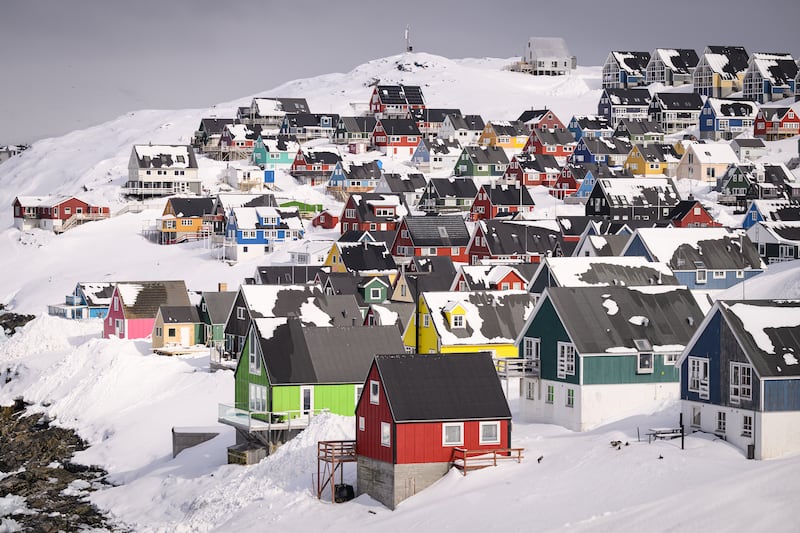It’s the surreality of the contrasting objects on display in Albania’s National Historical Museum that delivers a punch to the gut. Downstairs, in the Pavilion of Antiquity, there are sublime Grecian statues, and fragments of ancient mosaic floors. Upstairs, in the Hall of Communist Persecution, are unremarkable items of 1980s clothing: a yellow acrylic woman’s cardigan, a red plaid shirt, a black woollen donkey jacket.
Unremarkable but for the fact they all are drilled with bulletholes and stained with blood. These were the clothes worn by the Albanian citizens who were shot dead while trying to escape over the border from Enver Hoxha’s crazed authoritarian state, a few short decades ago.
Thousands died in this way. Those who remained within the country lived restricted lives under fear and perpetual surveillance, cut off from the rest of the outside world.
Hoxha ruled the small European country of Albania as a ruthless dictatorship from 1944 until his death in 1985. He was the Kim Jong-un of his era. By the time of his death, Albania was the third poorest country in the world. One of his many bizarre, paranoid enterprises was to order the pointless construction of 168,000 toadstool-like concrete bunkers throughout the country. They are visible in fields, in cities, in the medians of dual carriageways. They were built in case of external attack on the country; attacks that never happened.
[ Dan Griffin: Albania bunkers down with ideal habitats for batsOpens in new window ]
Under Hoxha, most of Tirana’s accommodation was composed of tall apartment buildings that housed thousands of people. They are still there: like the bunkers, the architectural bones of any communist regime are difficult to destroy. This may be why the recent construction in city-centre Tirana seems to be so frantic. Skyscrapers literally look as if they are contorting, or twisting. Huge new landmark buildings have entire floors shifted sideways, like a Jenga tower. Cranes are everywhere.
So is corruption, which is pervasive through politics and the economy, and which goes unchallenged. It’s the main reason why a possible entry to the EU is still years away. In Berat, 100km south of Tirana, I meet a tour guide in my guesthouse who speaks for an anguished hour about how widespread political corruption is, and how untrustworthy he feels his own society to be.
It’s also why so many Albanian citizens are leaving the country, and trying to enter Britain; part of a cohort of migrant refugees British home secretary Suella Braverman recently described as “an invasion”.
Berat, and Gjirokaster, further south, both have historic centres that are listed as Unesco World Heritage sites. They too are full of cranes for new hotels for a predicted rise in international tourism. Both towns are beautiful, with white Ottoman-era buildings, and both are alive with construction. There are so many streets being recobbled and so many listed buildings being aggressively restored, that I had no idea where the genuinely historic parts ended and the restorations began. The newly-opened hotel I stayed in Gjirokaster was unironically named Hotel Fantasy.
[ Poverty, fake promises and family ties lure Albanians to the UKOpens in new window ]
Back in Tirana, I go to visit the House of Leaves; a museum that records the chilling workings of the former Sigurimi, or secret police. Originally a small maternity hospital, under Hoxha it became the headquarters for the dreaded secret police.
Each room details the stupefying detail with which ordinary people were spied on, by other ordinary people, who were doing what people do under such unthinkable pressure; trying to survive themselves, even though it frequently meant being responsible for the deaths of innocent others. There is no space for morality under a dictatorship. About 28,000 citizens were murdered, some of them tortured to death in rooms in this building. A further 35,000 were forced into labour camps.
Hoxha’s wife, Nexhmije, died only two years ago. Their former home, built in 1974, is a few minutes’ walk from the former Secret Police headquarters. It was a swift commute for Hoxha. It’s untouched, and you can see it clearly from the street, with its original metal-framed windows and flat roofs. There is no sign to show who once lived there, but Google maps identifies it as such. The Guardian reported three years ago that there was a plan to open it the public, but that hasn’t happened yet. That article also mentioned the presence of several televisions within the house, on which Hoxha and his wife “would on occasion watch video footage of the torture and interrogation of those accused of being political prisoners”.



















